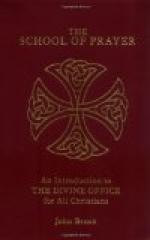The Athanasian Creed. In the Roman Breviary prior to the reform of 1911, the title given to the formula of faith was Symbolum S. Athanasi. In the new Breviaries the title stands Symbolum Athanasianum. Why was the change made?
During the past two hundred years the authorship of this formula has led to great discussion and its reading has led to much bitter and heated controversy in Anglican and Protestant churches. Many contended for its retention in Protestant services and many rejoiced at its partial exclusion, its truncated revision and clamoured for its rejection everywhere from service. Controversy led to the study of its origin. In 1872 a Protestant author, Ffoulkes, maintained that it was not composed by St. Athanasius (296-373) but by Paulinus of Aquileia (A.D. 800). But the literature of the age of Charlemagne proves that this creed had at the beginning of the ninth century an antiquity of at least more than a century (Ommaney, History and Structure of the Athanasian Creed, Oxford, 1897). Scholars, basing their opinions on words found in the Expositio Fidei Fortunati, date the origin of this symbol from the fifth century. It contains certain expressions which a writer subsequent to the Council of Chalcedon (451) would have been most unlikely to employ, and omits certain expressions which such a writer would have been most unlikely to omit. However, it is likely that the creed dates from the fifth century. Who its author was, is quite doubtful. It was not St. Athanasius, it may have been St. Hilary of Aries, or St. Vincent of Lerins, or some local bishop in southern France, “But let us only suppose that the real author was some local bishop—or the theologian employed by some local bishop—and that it was composed in the first instance for purely local use in some district of southern France—then does not the difficulty disappear, and are not the facts of its silent and gradual adoption suitably explained? Not coming from an author of wide reputation, it would not at first have attracted much attention and would




